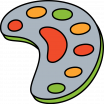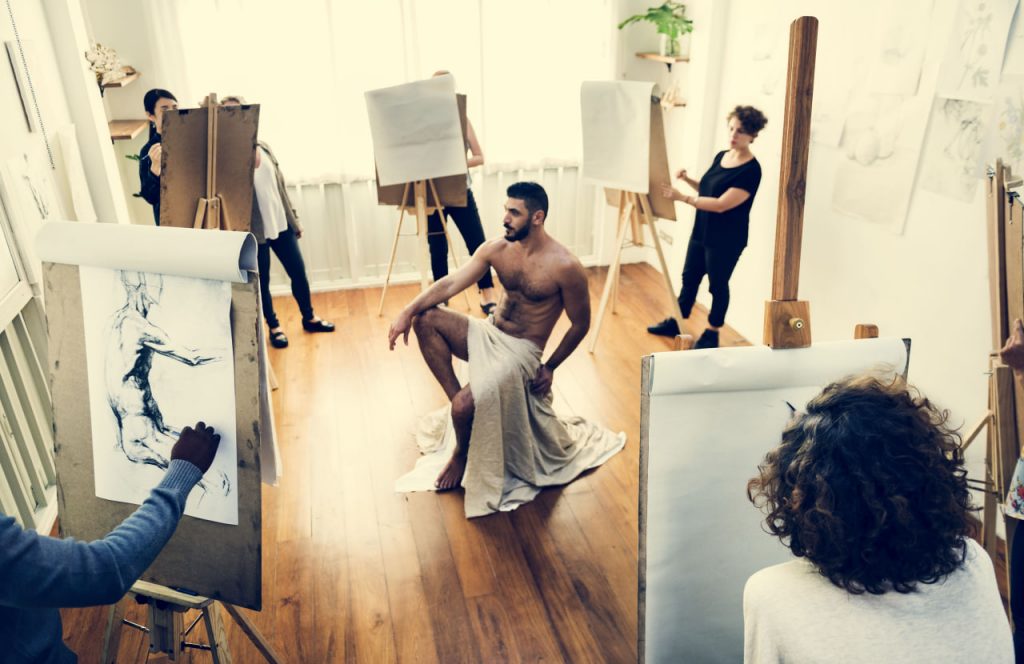Shading is an essential technique in realistic drawing, allowing artists to create depth, volume, and dimension in their work. Without shading, a drawing can appear flat and lifeless, lacking the visual interest and realism that comes from light and shadow. In this article, we will explore various shading techniques to help you bring your drawings to life.
1. The Importance of Shading in Realistic Art
Shading is what transforms a two-dimensional sketch into a three-dimensional masterpiece. By carefully observing how light interacts with the objects you’re drawing, you can replicate those effects through shading. Realistic shading helps define the contours of the subject, making it appear more lifelike.
Without shading, a drawing may have the right proportions and details, but it won’t convey the full impact of depth and volume. Light and shadow are essential to the illusion of three dimensions on a flat surface. Effective shading will enhance the texture, shape, and atmosphere of your artwork.
2. Types of Shading Techniques
There are several types of shading techniques that can be used to create different effects in your drawings. Each method has its unique benefits, and they can be combined to achieve the desired result.
1. Hatching
Hatching is a basic shading technique where you draw a series of parallel lines to indicate areas of shadow. The density of the lines determines the darkness of the shadow—closely spaced lines create a darker shade, while widely spaced lines result in a lighter shade. Hatching is great for achieving a textured look.
2. Cross-Hatching
Cross-hatching is a variation of hatching where you draw intersecting lines to create even darker shadows. By layering the lines in different directions, you can build up a more complex and varied shading effect. This technique is ideal for creating deep shadows and adding fine detail to your artwork.
3. Stippling
Stippling involves using small dots to create shading. The density of the dots controls the intensity of the shadow, with more dots creating darker areas and fewer dots creating lighter areas. This method can create a soft, gradual transition between light and shadow, giving your drawing a smooth and realistic appearance.
4. Blending
Blending is a technique that uses tools, such as a blending stump or a cotton swab, to smooth out the graphite or charcoal, creating a soft transition between light and dark areas. This technique is perfect for achieving smooth gradients and realistic shading in portraits and other soft-textured subjects.
3. Understanding Light and Shadow
The key to effective shading is understanding how light interacts with your subject. Light sources, such as a lamp or the sun, cast light on the object, creating highlights and shadows. The placement of the light source in relation to the object will influence where shadows are cast and how light falls on different parts of the subject.
When observing an object, think about the following:
- Highlight: This is the area that receives the most direct light. It is usually the lightest part of the object.
- Core shadow: This is the darkest part of the shadow on the object, typically located opposite the light source.
- Cast shadow: This is the shadow that the object creates on its surroundings. It will appear darker and more defined the further it is from the object.
By observing these aspects of light and shadow, you can replicate them in your drawing using the appropriate shading techniques.
4. Creating Realistic Texture with Shading
Shading is not just for creating depth—it can also help to convey texture. Different materials reflect light in various ways, and shading techniques can replicate the texture of skin, fabric, metal, glass, and more.
For example:
- Skin: Use soft, blended shading to create smooth transitions and subtle textures. Add light hatching for the areas of shadow, such as around the nose or under the chin, to create a lifelike appearance.
- Metal: For shiny surfaces like metal, use sharp contrast between light and dark areas to reflect how light bounces off the surface. Cross-hatching or stippling can create the reflective qualities of metal.
- Fabric: Fabric often has folds and wrinkles that catch light differently. Use soft shading with gradual transitions to represent the folds, and harder lines for shadows where the fabric overlaps.
By carefully observing the texture of your subject and using the appropriate shading technique, you can create incredibly realistic results.
5. Light vs. Dark: Creating Contrast
The use of contrast is essential when shading. Contrast refers to the difference between light and dark areas in your drawing. High contrast between the lightest and darkest areas will make your drawing appear more dramatic and lifelike.
Start by identifying the light and shadow areas of your subject and carefully choose where to place the darkest shadows and brightest highlights. Strong contrast can help to enhance the sense of depth and form, making the drawing feel more three-dimensional.
Tip: A common mistake is overworking the light areas. If you make the highlights too light or fail to create deep shadows, the drawing may look flat. Use a full range of values from light to dark to add depth and realism to your artwork.
6. Practice Tips for Shading
To improve your shading technique, regular practice is essential. Here are a few tips to help you develop your skills:
- Start with basic shapes: Practice shading simple shapes like spheres, cubes, and cylinders. This will help you understand how light interacts with three-dimensional objects.
- Use reference images: Find high-quality reference images that showcase strong light and shadow contrasts. Study them carefully and replicate the shading techniques you see.
- Build up layers: Start with light shading and gradually build up layers to achieve the desired darkness and texture. Don’t rush the shading process—take your time to create smooth, gradual transitions.
- Use the right tools: Experiment with different pencils (e.g., 2B, 4B, 6B) and shading tools (blending stumps, tissue, or cotton swabs) to see how they affect the shading in your drawings.
Conclusion
Mastering shading techniques is a crucial part of creating realistic drawings. By understanding the principles of light and shadow, practicing different shading techniques like hatching, cross-hatching, stippling, and blending, and focusing on texture and contrast, you can bring your drawings to life. Shading allows you to add depth, form, and realism to your artwork, making it an indispensable skill for any artist. With consistent practice and observation, you can develop your shading skills and take your realistic drawings to the next level.

